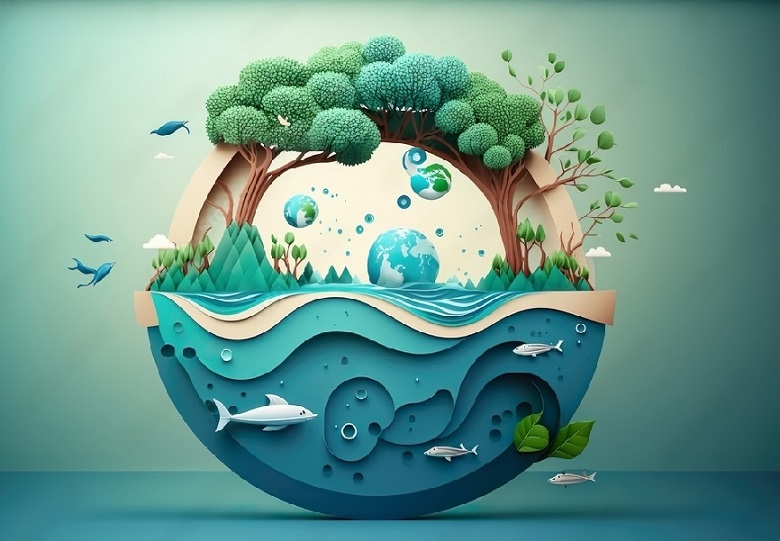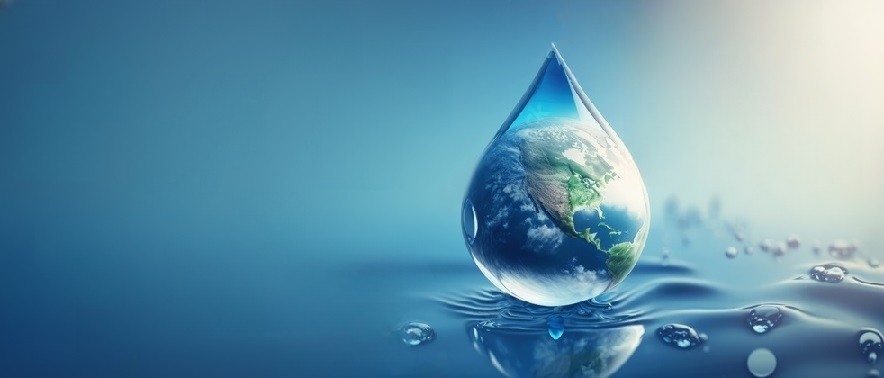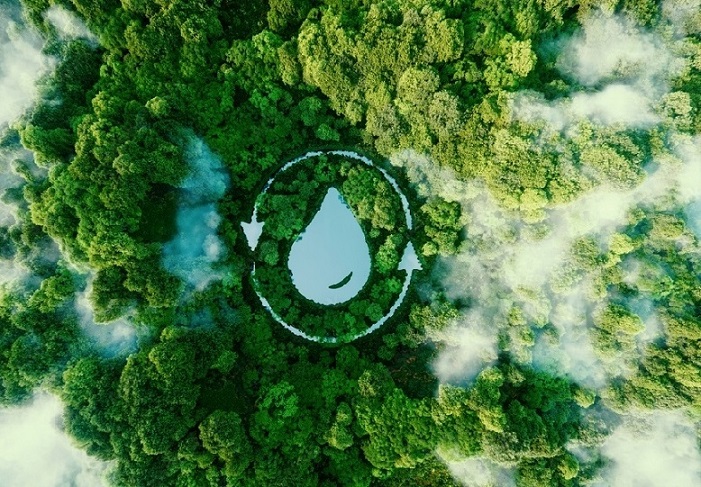Table of Contents
Introduction
In our quest for sustainability, every drop counts. Water conservation has become a pressing issue worldwide, prompting us to rethink even the most routine aspects of our lives, including personal hygiene practices. Enter bidets – the unsung heroes in the battle for water conservation. In this article, we delve into the fascinating world of bidets, exploring their history, functionality, and their significant contribution to preserving our planet’s most precious resource.

Historical Context of Bidets
Origins and Evolution
The bidet, a fixture commonly found in bathrooms, has a rich history dating back centuries. Originating in France in the 17th century, the bidet was initially a standalone basin used for personal hygiene, particularly for cleansing intimate areas. Over time, the bidet has evolved, adapting to various cultural preferences and technological advancements.
Cultural Significance
While bidets are commonplace in some parts of the world, they remain a novelty in others. In regions like Europe and Asia, bidets are integrated into daily hygiene routines and are considered essential for cleanliness. However, in many Western countries, bidets have yet to gain widespread acceptance, often viewed as unnecessary luxuries.
Challenges and Adoption
The journey towards bidet adoption has not been without its challenges. Cultural stigma, lack of awareness, and misconceptions about bidets have hindered their popularity in certain regions. Additionally, the initial cost of installing bidet fixtures and the perception of them as luxury items have deterred many from making the switch.
Understanding Water Consumption in Hygiene
Statistics and Environmental Impact
The average person may not realize the significant amount of water consumed during traditional hygiene practices. From flushing toilets to running faucets for handwashing, the cumulative impact on water resources is substantial. With growing concerns about water scarcity and environmental degradation, finding ways to minimize water usage in daily routines is paramount.
Alternative Solutions
Bidets offer a compelling solution to reduce water consumption in hygiene practices. Unlike traditional methods that rely heavily on water, bidets use a controlled stream of water for cleansing, resulting in significantly lower water usage per use. By integrating bidets into bathrooms, households can make substantial strides towards water conservation without sacrificing hygiene.

Bidets: How They Work
Types and Mechanisms
Bidets come in various forms, each offering unique features and functionalities to suit different preferences and needs. Understanding the types and mechanisms of bidets is essential for choosing the right option for your home. In this section, we explore the different types of bidets and how they work.
Traditional Bidets
Description: Traditional bidets are standalone fixtures typically found next to toilets in bathrooms. They resemble low basins or bowls and require users to straddle them for cleansing.
Mechanism: Traditional bidets feature a faucet or spray nozzle that delivers a controlled stream of water. Users can adjust the water temperature and pressure manually to their preference. After use, the user can pat dry with a towel or use a built-in air dryer, if available.
Installation: Traditional bidets require plumbing connections for water supply and drainage. They are typically installed as separate fixtures next to toilets, although some models may be integrated into toilet seats.
Electronic Bidet Seats
Description: Electronic bidet seats are attachments that can be installed on existing toilets, transforming them into bidets. These seats offer a range of features and controls for a customized cleansing experience.
Mechanism: Electronic bidet seats are equipped with a nozzle that extends beneath the user for cleansing. The nozzle emits a spray of water with adjustable temperature, pressure, and spray pattern settings. Some models may also include additional features such as heated seats, air dryers, and deodorizers.
Installation: Electronic bidet seats are installed directly onto existing toilet bowls, replacing the standard toilet seat. They require access to electrical outlets for powering the electronic components and may also require plumbing connections for water supply.
Bidet Attachments
Description: Bidet attachments are similar to electronic bidet seats but are more compact and affordable. They attach directly to existing toilet seats and provide basic cleansing functionality.
Mechanism: Bidet attachments feature a nozzle that extends beneath the user for cleansing, similar to electronic bidet seats. However, they may have fewer features and controls compared to full-fledged electronic bidet seats.
Installation: Bidet attachments are installed onto existing toilet seats using mounting brackets or adhesive pads. They do not require electrical connections but may require plumbing connections for water supply.
Handheld Bidets (Bidet Sprayers)
Description: Handheld bidets, also known as bidet sprayers or shattafs, are handheld devices that deliver a spray of water for cleansing. They are commonly used in conjunction with toilets and can be installed near the toilet for convenience.
Mechanism: Handheld bidets feature a nozzle connected to a flexible hose and a water supply valve. Users control the flow of water by pressing a trigger or turning a valve handle. Handheld bidets offer flexibility in targeting specific areas for cleansing.
Installation: Handheld bidets are installed near toilets using mounting brackets or wall-mounted holders. They require plumbing connections for water supply and may be installed with or without professional assistance.
Water Conservation Features
Bidets are not only beneficial for personal hygiene but also play a significant role in conserving water, a precious resource facing increasing scarcity. Modern bidets are designed with various features aimed at minimizing water usage without compromising cleanliness. In this section, we explore the water conservation features of bidets and how they contribute to sustainable living.
Low-Flow Nozzles
Description: Many modern bidets are equipped with low-flow nozzles that deliver a controlled stream of water for cleansing.
Functionality: Low-flow nozzles are designed to minimize water usage by restricting the flow rate while still ensuring effective cleansing. By delivering a precise stream of water, these nozzles optimize water usage without compromising hygiene.
Benefits: Low-flow nozzles significantly reduce water consumption per use compared to traditional methods, making them an eco-friendly choice for personal hygiene.
Adjustable Water Pressure and Temperature
Description: Most electronic bidets and bidet attachments feature adjustable water pressure and temperature settings.
Functionality: Users can customize the water pressure and temperature according to their preference and comfort level. By providing adjustable settings, bidets allow users to conserve water by using only the amount necessary for effective cleansing.
Benefits: Adjustable water pressure and temperature settings not only enhance user comfort but also contribute to water conservation by preventing unnecessary water wastage.
Dual Flush Options
Description: Some electronic bidet seats come with dual flush options for toilets, allowing users to choose between a full flush and a partial flush.
Functionality: Dual flush toilets use less water for liquid waste (partial flush) and more water for solid waste (full flush). By selecting the appropriate flush option, users can conserve water based on the type of waste being flushed.
Benefits: Dual flush options help reduce water consumption by using only the necessary amount of water for flushing, thus promoting water conservation in addition to bidet usage.
Sensor-Activated Functions
Description: Advanced electronic bidet seats may include sensor-activated functions such as automatic open/close lids and occupancy sensors.
Functionality: Sensor-activated functions eliminate the need for manual operation, reducing the risk of water wastage due to human error. Automatic open/close lids and occupancy sensors ensure that bidet functions are activated only when needed, conserving water when not in use.
Benefits: Sensor-activated functions improve user convenience and promote water conservation by minimizing unnecessary water usage during bidet operation.
Eco Mode and Energy-Saving Features
Description: Some electronic bidet seats are equipped with eco mode and energy-saving features to reduce water and energy consumption.
Functionality: Eco mode adjusts the water and energy settings to optimize efficiency and minimize resource usage. Energy-saving features may include automatic shut-off timers and power-saving modes to conserve electricity when the bidet is not in use.
Benefits: Eco mode and energy-saving features not only reduce water and energy bills but also contribute to environmental sustainability by promoting responsible resource usage.

Benefits of Bidets in Water Conservation
Reduction in Water Consumption
The environmental benefits of bidets are undeniable. By replacing or complementing traditional hygiene practices with bidets, individuals can drastically reduce their water footprint. With each use, bidets consume only a fraction of the water required for conventional methods, making them a sustainable choice for eco-conscious consumers.
Long-Term Impact
The impact of bidets extends beyond individual households. As more people embrace bidets as a water-saving alternative, the cumulative effect on water conservation becomes significant. By incorporating bidets into building codes and promoting their widespread adoption, communities can collectively reduce water consumption and mitigate the strain on local water sources.
Potential for Widespread Adoption
While bidets have yet to achieve mainstream acceptance in some regions, their potential for widespread adoption is promising. As awareness of water conservation grows and technology advances, more individuals are recognizing the benefits of bidets. Additionally, initiatives aimed at promoting bidet usage and dispelling myths surrounding them are helping to overcome barriers to adoption.
Challenges and Misconceptions
Cultural Barriers
One of the primary challenges hindering bidet adoption is cultural stigma. In regions where bidets are not traditionally used, there may be resistance to incorporating them into bathroom routines. Overcoming these cultural barriers requires education and awareness campaigns to highlight the benefits of bidets for hygiene and water conservation.
Perception and Misconceptions
Bidets are often perceived as luxury items rather than practical solutions for water conservation. Changing this perception requires debunking common misconceptions about bidets, such as concerns about cleanliness and effectiveness. By providing accurate information and addressing misconceptions, individuals can make informed decisions about integrating bidets into their homes.

Case Studies and Success Stories
High Adoption Regions
Countries like Japan and South Korea serve as prime examples of bidet adoption success stories. In these regions, bidets are ubiquitous, with electronic bidet seats installed in the majority of households. As a result, water usage for hygiene purposes is significantly lower compared to countries where bidets are less prevalent, contributing to overall water conservation efforts.
Promotional Initiatives
Companies and organizations are also playing a crucial role in promoting bidets as sustainable alternatives. Through marketing campaigns, product innovation, and partnerships with environmental organizations, bidet manufacturers are raising awareness about the benefits of bidets for water conservation. These efforts are instrumental in shifting consumer attitudes and driving demand for bidet products.

Future Outlook and Recommendations
Technological Advancements
The future of bidets lies in technological innovation. Advancements such as smart sensors, water-recycling systems, and voice-activated controls have the potential to further enhance water conservation efforts. By investing in research and development, manufacturers can continue to improve the efficiency and sustainability of bidet products.
Policy Implications
Policymakers also have a role to play in promoting bidets as a water-saving solution. By incorporating incentives such as tax credits or rebates for bidet installations, governments can encourage households to make the switch. Additionally, integrating bidet-friendly design standards into building codes can facilitate the widespread adoption of bidets in new construction projects.
Education and Awareness
In addition to their practical advantages for personal hygiene and water conservation, bidets offer significant educational and awareness benefits. By promoting understanding and acceptance of bidets, individuals and communities can contribute to a more sustainable and hygienic future. In this section, we explore the educational and awareness benefits of bidets and their impact on society.
Promoting Hygiene Education
Enhancing Personal Hygiene: Bidets provide an opportunity to educate individuals about proper hygiene practices, including the importance of thorough cleansing for overall health and well-being. By incorporating bidets into hygiene routines, users can maintain better hygiene standards and reduce the risk of infections and illnesses.
Addressing Cultural Stigma: In regions where bidets are not commonly used, there may be cultural stigma or misconceptions surrounding their effectiveness and cleanliness. Education initiatives can help dispel these myths and promote bidets as hygienic and practical solutions for personal cleansing.
Raising Awareness about Water Conservation
Highlighting Water Usage: Bidets serve as a tangible example of how small changes in daily routines can have a significant impact on water conservation. By raising awareness about the water-saving benefits of bidets, individuals can gain a better understanding of their role in preserving water resources for future generations.
Encouraging Sustainable Behavior: Educating the public about the environmental impact of water usage in hygiene practices can motivate individuals to adopt more sustainable behaviors. By choosing bidets over traditional methods, individuals can contribute to water conservation efforts and reduce their ecological footprint.
Fostering Innovation and Technological Advancement
Encouraging Research and Development: The growing interest in bidets and water conservation has led to increased investment in research and development. By promoting awareness of bidets and their benefits, education initiatives can encourage innovation in bidet technology, leading to more efficient and user-friendly products.
Driving Market Demand: As awareness of bidets grows, so does demand for bidet products and accessories. This increased market demand creates opportunities for businesses to develop and market new bidet solutions, driving further innovation and technological advancement in the industry.
Building a Culture of Sustainability
Promoting Eco-Friendly Practices: By integrating bidets into daily routines, individuals can adopt more eco-friendly practices and contribute to a culture of sustainability. Education initiatives can help instill a sense of responsibility for environmental stewardship, encouraging individuals to make conscious choices that benefit both themselves and the planet.
Creating Lasting Behavior Change: Education and awareness efforts have the potential to create lasting behavior change among individuals and communities. By promoting the benefits of bidets and water conservation, these initiatives can inspire people to adopt more sustainable habits that have a positive impact on the environment.
Conclusion
In conclusion, bidets represent a simple yet impactful solution to water conservation in personal hygiene practices. By reducing water usage per use and promoting widespread adoption, bidets have the potential to make a significant contribution to preserving our planet’s finite water resources. Through education, innovation, and policy support, we can embrace bidets as a sustainable choice for cleaner, greener living. Let’s make every drop count.
